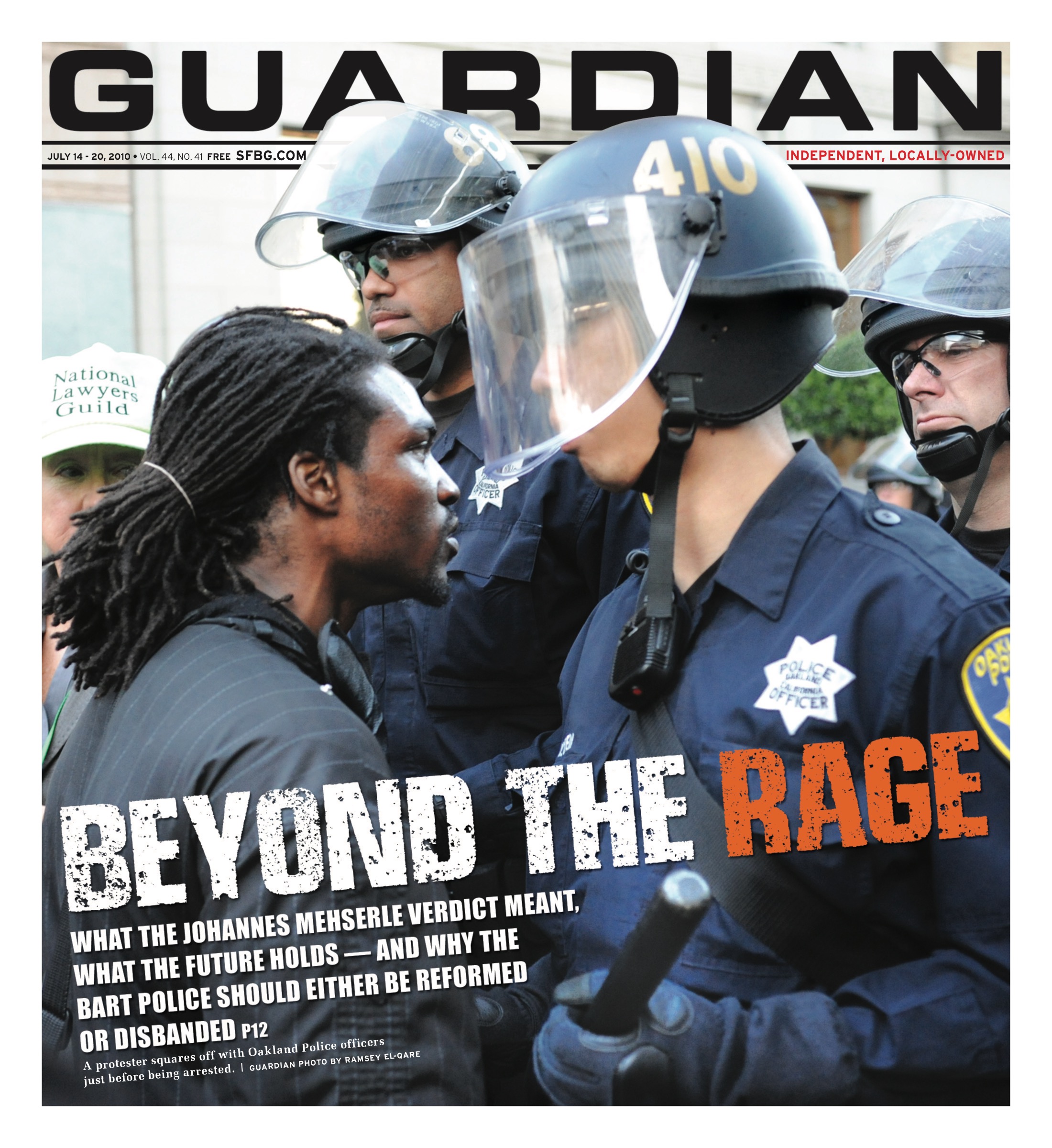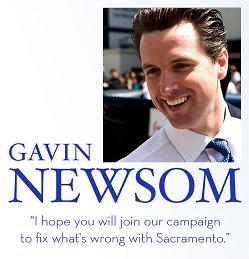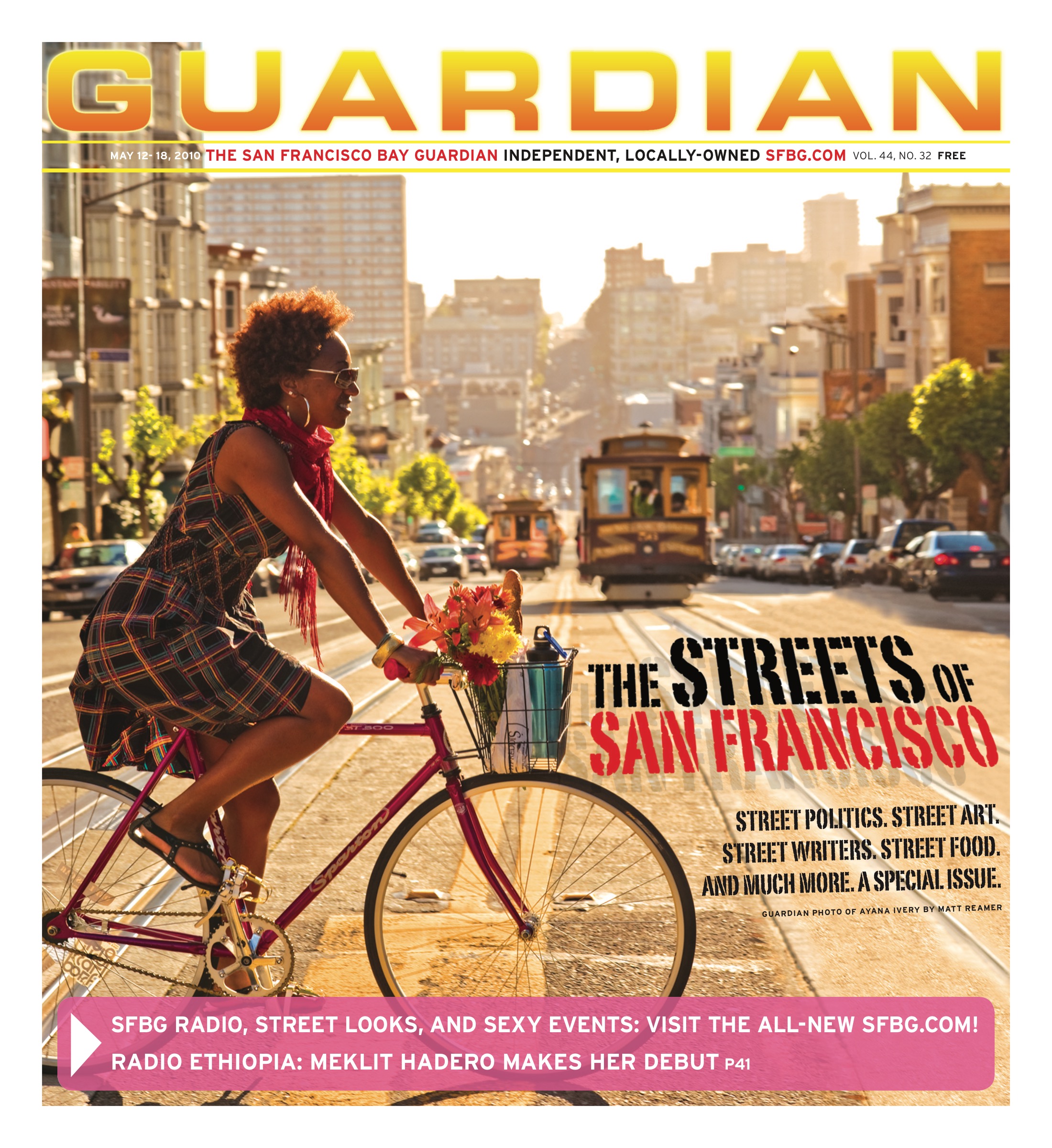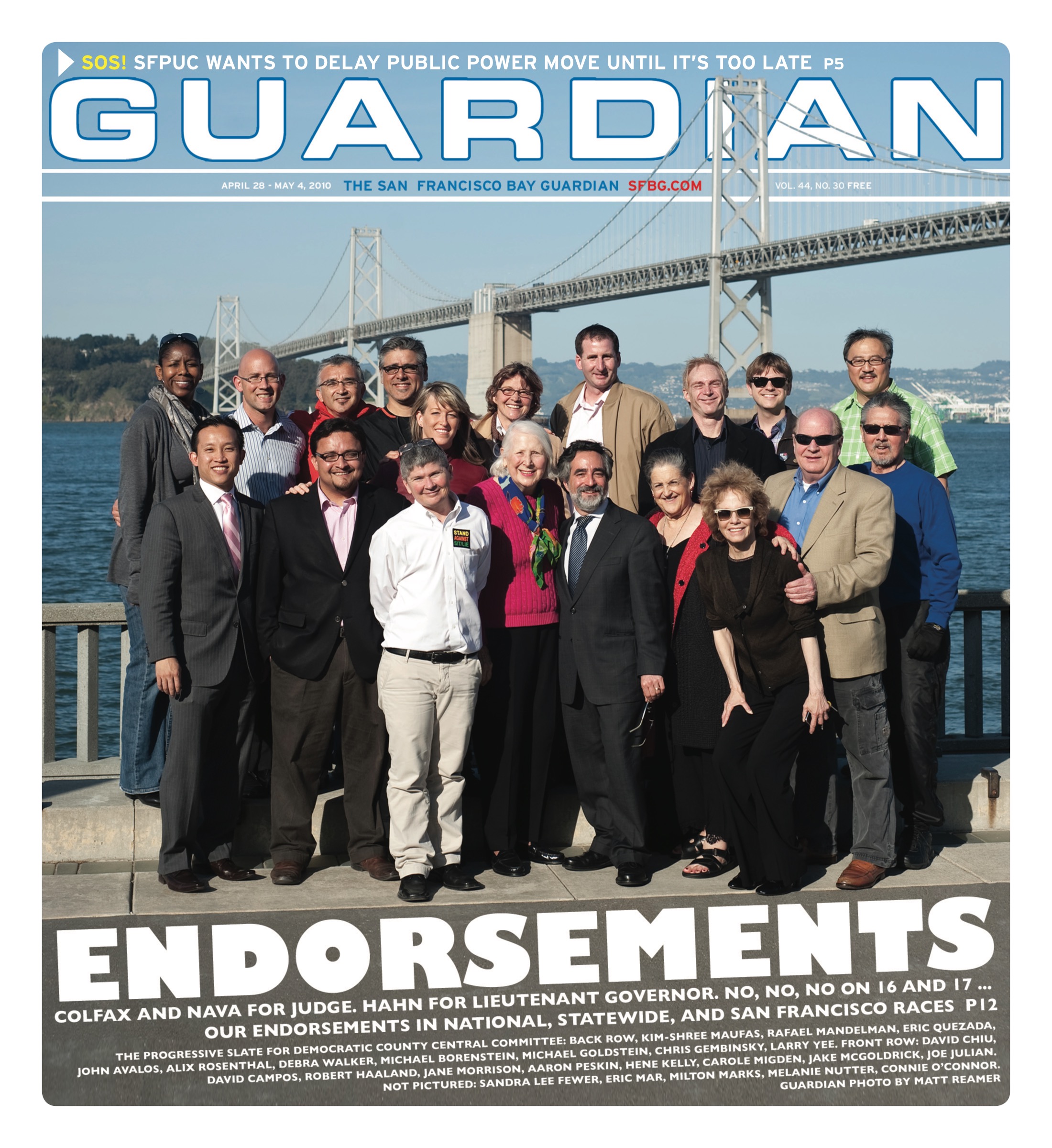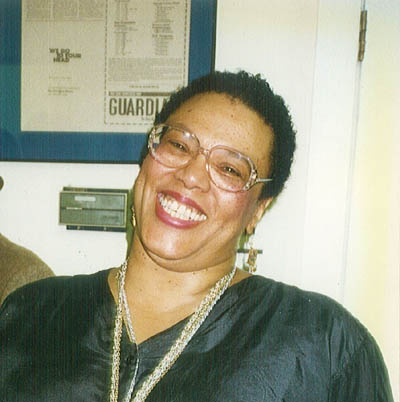Music listings are compiled by Paula Connelly and Cheryl Eddy. Since club life is unpredictable, it’s a good idea to call ahead to confirm bookings and hours. Prices are listed when provided to us. Submit items at listings@sfbg.com.
WEDNESDAY 9
ROCK/BLUES/HIP-HOP
*Amber Asylum, Bloody Panda, Trees, Barn Owl Elbo Room. 9pm, $7.
Basia Bimbo’s 365 Club. 8pm, $32.
Crusaders of Love Pissed-Off Pete’s, 4528 Mission, SF; www.pissedoffpetes.com. 9pm.
Dashing Sons, Tokyo Raid, Meta Hemlock Tavern. 9pm, $7.
Delta Spirit, Ezra Furman and the Harpoons, Romany Rye Independent. 8pm, $15.
Ferocious Few, Eugene and the 1914, Generals Bottom of the Hill. 9pm, $8.
“Got Kidney? and Hip-Hop(e) for Healing Tour” Mighty. 9pm. Organ donor-awarness event with Rasco of the Cali Agents, Big Pooh of Little Brother, Kam Moye aka Supastition, Otayo Dubb, and 7 Daize.
Health, Indian Jewelry, Gold Panda Slim’s. 8pm, $15.
Jesse Malin and the St. Marks School Café du Nord. 9:30pm, $15.
Harvey Mandel and Snake Crew Biscuits and Blues. 8 and 10pm, $18.
Sadies, Loons, East Bay Grease Great American Music Hall. 8pm, $15.
Steppin’ featuring Oscar Myer Coda. 7pm, $5.
Yellow Dress, Birds Fled From Me, Quite Polite Rickshaw Stop. 8pm, $10.
DANCE CLUBS
Booty Call Q-Bar, 456 Castro, SF; www.bootycallwednesdays.com. 9pm. Juanita Moore hosts this dance party, featuring DJ Robot Hustle.
4OneFunk Coda. 10pm, free. Turntablism DJs.
Hands Down! Bar on Church. 9pm, free. With DJs Claksaarb, Mykill, and guests spinning indie, electro, house, and bangers.
Machine Sloane, 1525 Mission, SF; (415) 621-7007. 10pm, free. Warm beats for happy feet with DJs Sergio, Conor, and André Lucero.
Mary-Go-Round Lookout, 3600 16th St, SF; (415) 431-0306. 10pm, $5. A weekly drag show with hosts Cookie Dough, Pollo Del Mar, and Suppositori Spelling.
Nacht Musik Knockout. 10:30pm, $5. Dark, minimal, and electronic with DJs Omar, Josh, and Justin.
Open Mic Night 330 Ritch. 9pm, $7.
RedWine Social Dalva. 9pm-2am, free. DJ TophOne and guests spin outernational funk and get drunk.
Respect Wednesdays End Up. 10pm, $5. Rotating DJs Daddy Rolo, Young Fyah, Irie Dole, I-Vier, Sake One, Serg, and more spinning reggae, dancehall, roots, lovers rock, and mash ups.
Synchronize Il Pirata, 2007 16th St, SF; (415) 626-2626. 10pm, free. Psychedelic dance music with DJs Helios, Gatto Matto, Psy Lotus, Intergalactoid, and guests.
Yoruba Dance Sessions Bacano! Som., 2925 16th St, SF; (415) 558-8521. 9pm, free. With resident DJ Carlos Mena and guests spinning afro-deep-global-soulful-broken-techhouse.
THURSDAY 10
ROCK/BLUES/HIP-HOP
Pryor Baird and the Deacons Biscuits and Blues. 8 and 10pm, $15.
Curtis Bumpy Coda. 9pm, $10.
*Felonious, Shotgun Wedding Quintet, Rondo Brothers Independent. 9pm, $15.
Good Life, Parson Red Heads, Contrall Bottom of the Hill. 9pm, $12.
Hundred Days, Scissors for Lefty, Voxhaul Broadcast Rickshaw Stop. 8pm, $10.
Greg Laswell, Jimmy Gnecco, Brian Wright Café du Nord. 9pm, $15.
Mewithoutyou, David Bazan, Rubik Regency Ballroom. 8pm, $17.
*Radio Moscow, Hollow Mirrors, Red Light Mind, Smokestacks Thee Parkside. 9pm, $10.
Brittany Shane, Revolver Hard Rock Café, Pier 39, SF; www.hardrock.com. 9pm, donations. Benefit for Breast Cancer Action.
Sleepy Sun, Fresh and Onlys, Moon Duo Great American Music Hall. 9pm, $16.
Slippery People, Baby Seal Club, Exit Wonderland El Rio. 8pm, $5.
*Stiff Little Fingers, Culann’s Hounds Slim’s. 9pm, $20.
Ugly Winners, Glass Train, Ian Fays Knockout. 10pm, $5.
FOLK/WORLD/COUNTRY
Æ Red Poppy Art House. 8pm, $12-$15. Interpretations of world vocal traditions.
Alhambra Valley Band Atlas Café. 8pm, free.
Chris Ayer, Skyler Stonestreet, Matt Simons, Morgan Holland Hotel Utah. 8pm, $10.
Shannon Céilí Band Plough and Stars. 9pm.
DANCE CLUBS
Afrolicious Elbo Room. 9:30pm, $5-7. DJs Pleasuremaker and Señor Oz and special guest Kento Tanaka spin Afro-tropical, samba, and funk.
CakeMIX SF Wish, 1539 Folsom, SF; www.wishsf.com. 10pm, free. DJ Carey Kopp spinning funk, soul, and hip hop.
Caribbean Connection Little Baobab, 3388 19th St, SF; (415) 643-3558. 10pm, $3. DJ Stevie B and guests spin reggae, soca, zouk, reggaetón, and more.
Drop the Pressure Underground SF. 6-10pm, free. Electro, house, and datafunk highlight this weekly happy hour.
Good Foot Som., 2925 16th St, SF; (415) 558-8521. 10pm, free. With DJs spinning R&B, Hip hop, classics, and soul.
Gymnasium Matador, 10 Sixth St, SF; (415) 863-4629. 9pm, free. With DJ Violent Vickie and guests spinning electro, hip hop, and disco.
Jivin’ Dirty Disco Butter, 354 11th St., SF; (415) 863-5964. 8pm, free. With DJs spinning disco, funk, and classics.
Kissing Booth Make-Out Room. 9pm, free. DJs Jory, Commodore 69, and more spinning indie dance, disco, 80’s, and electro.
Koko Puffs Koko Cocktails, 1060 Geary, SF; (415) 885-4788. 10pm, free. Dubby roots reggae and Jamaican funk from rotating DJs.
Steve Lawler Vessel, 85 Campton, SF; (415) 515-4091. 9:30pm, $20. Spinning electronic.
Mestiza Bollywood Café, 3376 19th St, SF; (415) 970-0362. 10pm, free. Showcasing progressive Latin and global beats with DJ Juan Data.
Motion Sickness Vertigo, 1160 Polk, SF; (415) 674-1278. 10pm, free. Genre-bending dance party with DJs Sneaky P, Public Frenemy, and D_Ro Cyclist.
Peaches Skylark, 10pm, free. With an all female DJ line up featuring Deeandroid, Lady Fingaz, That Girl, and Umami spinning hip hop.
Popscene 330 Rich. 10pm, $10. Rotating DJs spinning indie, Britpop, electro, new wave, and post-punk.
Solid Thursdays Club Six. 9pm, free. With DJs Daddy Rolo and Tesfa spinning roots, reggae, dancehall, soca, and mashups.
FRIDAY 11
ROCK/BLUES/HIP-HOP
*Angry Samoans, Bum City Saints, Fabulous Disaster, Headslide Bottom of the Hill. 9pm, $10.
Holy Shit, Brian Glaze and the Nightshift, Facts on File, Soft Bombs Knockout. 9pm, $7.
John Lee Hooker Jr. Biscuits and Blues. 8 and 10pm, $22.
Howdy! Connecticut Yankee, 100 Connecticut, SF; www.theyankee.com. 9pm, $5.
Or, the Whale, AB and the Sea, Get Back Loretta Rickshaw Stop. 8:30pm, $10.
Personal and the Pizzas, Wrong Words, Part Time, Spurts Pissed-Off Pete’s, 4528 Mission, SF; www.pissedoffpetes.com. 9pm.
Radiators, DJ Harry Duncan Independent. 9pm, $25.
Robert Randolph and the Family Band Fillmore. 9pm, $25.
Mariee Sioux, Foxtails Brigade, Judgement Day acoustic with friends Swedish American Hall (upstairs from Café du Nord). 8pm, $12.
Sonny and the Sunsets, Wounded Lion, John Wesley Coleman Hemlock Tavern. 9:30pm, $8.
*Tortoise, Das Boton Great American Music Hall. 9pm, $21.
JAZZ/NEW MUSIC
Audium 9 1616 Bush, SF; (415) 771-1616. 8:30pm, $15.
Black Market Jazz Orchestra Top of the Mark. 9pm, $10.
Broun Fellinis Coda. 10pm, $10.
Chris Braun Group Savanna Jazz. 7:30pm, $5.
Eric Kurtzrock Trio Ana Mandara, Ghirardelli Square, 891 Beach, SF; (415) 771-6800. 8pm, free.
Jack Curtis Dubrowsky Ensemble African American Arts and Culture Complex, 762 Fulton, SF; (415) 762-2071. 7:30pm, $12-20.
Lowrider Band Yoshi’s San Francisco. 8 and 10pm, $16-24.
Marcus Miller feat. Christian Scott Herbst Theatre, 401 Van Ness, SF; www.sfjazz.org. 8pm, $25-75.
FOLK/WORLD/COUNTRY
Forro Brazuca, DJ Fausto Sousa Café du Nord. 9pm, $15.
Freebadge Serenaders, Blair St. Mugwumps Plough and Stars. 9pm.
White Buffalo, Sarah Nicole Wallace Hemlock Tavern. 9pm, $12.
*Woods, Kurt Vile, Art Museums, Mantles Slim’s. 8pm, $16.
DANCE CLUBS
Activate! Lookout, 3600 16th St, SF; (415) 431-0306. 9pm, $3. Face your demigods and demons at this Red Bull-fueled party.
Blow Up Rickshaw Stop. 10pm, $10. With rotating DJs.
Death Rock Sock Hop DNA Lounge. 7:30pm, $20. Swing Goth’s third anniversary, with performances by Lee Press-On and the Nails, Fromagique, Barry Syska and the Fantasy Orchestra, and DJS Shatter and Skip.
Exhale, Fridays Project One Gallery, 251 Rhode Island, SF; (415) 465-2129. 5pm, $5. Happy hour with art, fine food, and music with Vin Sol, King Most, DJ Centipede, and Shane King.
Fat Stack Fridays Koko Cocktails, 1060 Geary, SF; (415) 885-4788. 10pm, free. With rotating DJs Romanowski, B-Love, Tomas, Toph One, and Vinnie Esparza.
Fo’ Sho! Fridays Madrone Art Bar. 10pm, $5. DJs Kung Fu Chris and Makossa spin rare grooves, soul, funk, and hip-hop classics. With special guests DJ Sureshot and E Da Boss.
Fubar Fridays Butter, 354 11th St., SF; (415) 863-5964. 6pm, $5. With DJs spinning retro mashup remixes.
Gay Asian Paradise Club Eight, 1151 Folsom, SF; www.eightsf.com. 9pm, $8. Featuring two dance floors playing dance and hip hop, smoking patio, and 2 for 1 drinks before 10pm.
Good Life Fridays Apartment 24, 440 Broadway, SF; (415) 989-3434. 10pm, $10. With DJ Brian spinning hip hop, mashups, and top 40.
Gymnasium Stud. 10pm, $5. With DJs Violent Vickie and guests spinning electro, disco, rap, and 90s dance and featuring performers, gymnastics, jump rope, drink specials, and more.
Hot Chocolate Milk. 9pm, $5. With DJs Big Fat Frog, Chardmo, DuseRock, and more spinning old and new school funk.
Look Out Weekend Bambuddha Lounge. 4pm, free. Drink specials, food menu and resident DJs White Girl Lust, Swayzee, Philie Ocean, and more.
M4M Fridays Underground SF. 10pm-2am. Joshua J and Frankie Sharp host this man-tastic party.
Rockabilly Fridays Jay N Bee Club, 2736 20th St, SF; (415) 824-4190. 9pm, free. With DJs Rockin’ Raul, Oakie Oran, Sergio Iglesias, and Tanoa “Samoa Boy” spinning 50s and 60s Doo Wop, Rockabilly, Bop, Jive, and more.
Strictly Video 111 Minna. 9pm, $10. With VDJs Shortkut, Swift Rock, GoldenChyld, and Satva spinning rap, 80s, R&B, and Dancehall.
Treat Em Right Elbo Room. 10pm, $5. Hip-hop, funk, reggae, and more with DJs Vinnie Esparza, B. Cause, and guest DJ Day.
SATURDAY 12
ROCK/BLUES/HIP-HOP
Alabama Mike and Third Degree Biscuits and Blues. 8 and 10pm, $20.
Blue Dream Pissed-Off Pete’s, 4528 Mission, SF; www.pissedoffpetes.com. 9pm.
Forrest Day, Battlehooch, 7 Orange, ABC Great American Music Hall. 9pm, $14.
*Exodus, Heathen, Anvil Chorus, Passive Aggressive Slim’s. 8pm, $21.
Glitch Mob Fillmore. 9pm, $25.
Tony Lindsey Coda. 10pm.
Nightbringer, Nazxul, Ravnajuv, Beyond Thee Parkside. 9pm, $12.
Prids, Soft Tags, Burrows Hemlock Tavern. 9:30pm, $7.
Radiators, DJ Harry Duncan Independent. 9pm, $25.
*Subhumans, A-Heads, Cross Stitched Eyes, Sin Orden Bottom of the Hill. 8pm, $12.
Super Adventure Club, As a People, Monsters Are Not Myths Hemlock Tavern. 9pm, $8.
*Austin Willacy, Kate Isenberg, Annie Bacon, Society Rocks Red Devil Lounge. 8:30pm, $10.
“Witches Brew” Thee Parkside. 2pm, $5. With WC Von Der Berk’s Gothic Cabaret, Slow Poisoner, Ol’ Cheeky Bastards, and more.
JAZZ/NEW MUSIC
Audium 9 1616 Bush, SF; (415) 771-1616. 8:30pm, $15.
Dave Rocha Trio Enrico’s, 504 Broadway, SF; www.enricossf.com. 8pm.
Eric Kurtzrock Trio Ana Mandara, Ghirardelli Square, 891 Beach, SF; (415) 771-6800. 8pm, free.
Salif Keita Bimbo’s 365 Club. 8 and 10:30pm, $35.
Lowrider Band Yoshi’s San Francisco. 8 and 10pm, $24.
Carol Luckenbach Savanna Jazz. 7:30pm, $8.
Rova Saxophone Quartet ODC Dance Commons, 351 Shotwell, SF; www.odcdance.org. 8pm.
FOLK/WORLD/COUNTRY
Brass Menazeri, Janam Café du Nord. 9:30pm, $15.
Gayle Lynn and the Hired Hands, Misisipi Rider Plough and Stars. 9pm.
DANCE CLUBS
Bar on Church 9pm. Rotating DJs Foxxee, Joseph Lee, Zhaldee, Mark Andrus, and Niuxx.
Bootie DNA Lounge. 9pm, $6-12. Mash-ups.
Cockblock Rickshaw Stop. 10pm, $7. Queer dance party for homos and friends with DJs Nuxx and Jax.
Dead After Dark Knockout. 6-9pm, free. With DJ Touchy Feely.
Electricity Knockout. 10pm, $4. A decade of 80s with Omar, Deadbeat, and Yule Be Sorry.
Frolic Stud. 9pm, $3-7. DJs Dragn’Fly, NeonBunny, and Ikkuma spin at this celebration of anthropomorphic costume and dance. Animal outfits encouraged.
HYP Club Eight, 1151 Folsom, SF; www.eightsf.com. 10pm, free. Gay and lesbian hip hop party, featuring DJs spinning the newest in the top 40s hip hop and hyphy.
Rock City Butter, 354 11th St., SF; (415) 863-5964. 6pm, $5 after 10pm. With DJs spinning party rock.
Same Sex Salsa and Swing Magnet, 4122 18th St, SF; (415) 305-8242. 7pm, free.
Social Club Lookout, 3600 16th St, SF; (415) 431-0306. 9pm. Shake your money maker with DJs Lee Decker and Luke Fry.
Soul Slam SF V: Prince and Michael Mezzanine. 9pm, $25. With DJs Spinna, Marky, Hakobo, and King Most spinning non-stop soul from two of music’s biggest icons.
Spirit Fingers Sessions 330 Ritch. 9pm, free. With DJ Morse Code and live guest performances.
Spotlight Siberia, 314 11th St, SF; (415) 552-2100. 10pm. With DJs Slowpoke, Double Impact, and Moe1.
Tormenta Tropical DNA Lounge. 10pm, $5-10. Cumbia-electro DJs.
White Party Ruby Skye. 10pm, $60. Featuring Hernan Cattaneo and DJs Helicopter and Bali.
SUNDAY 13
ROCK/BLUES/HIP-HOP
“Battle of the Bands” DNA Lounge. 5:30pm, $12. With Pistols for Jesus, Gates of Light, Jordan and the Hashemites, and more.
Bob Log III, Devil’s Own, Bordertown Saints Bottom of the Hill. 9pm, $12.
Charity and the Jamband Park Chalet, 1000 Great Hwy, SF; www.beachchalet.com. 3pm, free.
Justin Curry, Jaymes Reunion Café du Nord. 8pm, $22.
Janiva Magness Biscuits and Blues. 8 and 10pm, $18.
Rademacher, Fake Your Own Death, My Education Hemlock Tavern. 8pm, $7.
Real Estate, All Saints Day, Young Prisms Independent. 8pm, $14.
Theresa Perez Band El Rio. 8pm, $15.
Sam Vicari Pissed-Off Pete’s, 4528 Mission, SF; www.pissedoffpetes.com. 9pm.
“Wavy Gravy’s All-Star Jam” Great American Music Hall. 8pm, $40. Benefit for Seva Foundation.
*Western Family Orchestra, Jeffrey Luck Lucas Make-Out Room. 8pm, $7.
Wonder Girls Fillmore. 3pm, $50.
FOLK/WORLD/COUNTRY
Marla Fibish, Erin Shrader, Richard Mandel and friends Plough and Stars. 9pm.
Huun Huur Tu Swedish American Hall (upstairs from Café du Nord). 8pm, $25.
Rumbache El Rio. 4pm, $8.
Sophis and Kalbass Kreyol Coda. 7pm, $10.
DANCE CLUBS
DiscoFunk Mashups Cat Club. 10pm, free. House and 70’s music.
Dub Mission Elbo Room. 9pm, $8-11. Dub, roots, and classic dancehall with J Boogie and Vinnie Esparza.
Gloss Sundays Trigger, 2344 Market, SF; (415) 551-CLUB. 7pm. With DJ Hawthorne spinning house, funk, soul, retro, and disco.
Honey Soundsystem Paradise Lounge. 8pm-2am. “Dance floor for dancers – sound system for lovers.” Got that?
Jock! Lookout, 3600 16th St, SF; (415) 431-0306. 3pm, $2. This high-energy party raises money for LGBT sports teams.
Kick It Bar on Church. 9pm. Hip-hop with DJ Zax.
Lonely Teardrops Rock N’ Roll Night Knockout. 9pm, $4. With Hi Rhythm Hustlers, Glass Key, and DJs dX the Funky Granpaw and Sergio Iglesias.
Religion Bar on Church. 3pm. With DJ Nikita.
Stag AsiaSF. 6pm, $5. Gay bachelor parties are the target demo of this weekly erotic tea dance.
MONDAY 14
ROCK/BLUES/HIP-HOP
Gregory Alan Isakov Café du Nord. 8pm, $10-12.
Local H, Left Brain Heart Independent. 8pm, $15.
Piles, Death Sentence: Panda!, Awesomes, Telepathic Liberation Army Knockout. 9pm, $6.
Rooftop Vigilantes, Murkins, Dirty Cupcakes Elbo Room. 9pm, $5.
Spectre Folk, Blissed Out, Run DMT Hemlock Tavern. 6pm, $5.
2AM Club, Cambo and the Life, Young Murph Rickshaw Stop. 7pm, $12.
Jenny Owen Youngs, April Smith and the Great Picture Show, William Tell Bottom of the Hill. 9pm, $12.
DANCE CLUBS
Bacano! Som., 2925 16th St, SF; (415) 558-8521. 9pm, free. With resident DJs El Kool Kyle and Santero spinning Latin music.
Black Gold Koko Cocktails, 1060 Geary, SF; (415) 885-4788. 10pm-2am, free. Senator Soul spins Detroit soul, Motown, New Orleans R&B, and more — all on 45!
Death Guild DNA Lounge. 9:30pm, $3-5. Gothic, industrial, and synthpop with Decay, Joe Radio, and Melting Girl.
Krazy Mondays Beauty Bar. 10pm, free. With DJs Ant-1, $ir-Tipp, Ruby Red I, Lo, and Gelo spinning hip hop.
M.O.M. Madrone Art Bar. 6pm, free. With DJ Gordo Cabeza and guests playing all Motown every Monday.
Manic Mondays Bar on Church. 9pm. Drink 80-cent cosmos with Djs Mark Andrus and Dangerous Dan.
Monster Show Underground SF. 10pm, $5. Cookie Dough and DJ MC2 make Mondays worth dancing about, with a killer drag show at 11pm.
Musik for Your Teeth Revolution Café, 3248 22nd St., SF; (415) 642-0474. 5pm, free. Soul cookin’ happy hour tunes with DJ Antonino Musco.
Network Mondays Azul Lounge, One Tillman Pl, SF; www.inhousetalent.com. 9pm, $5. Hip-hop, R&B, and spoken word open mic, plus featured performers.
Represent Makeout Room. 9pm, free. With DJs Xraydusa and Noey G spinning soul, funk, and beats.
Skylarking Skylark. 10pm, free. With resident DJs I & I Vibration, Beatnok, and Mr. Lucky and weekly guest DJs.
TUESDAY 15
ROCK/BLUES/HIP-HOP
Denouement, Ms. Mister, TrainFace El Rio. 7pm, free.
Foreign Cinema, Past and Future, Sunbeam Rd Hemlock Tavern. 9pm, $6.
Freight Train, Gemini Six, Concrete Marshmallow Bottom of the Hill. 9pm, $8.
Matt Pond PA, Wintersleep, Lonely Forest Independent. 8pm, $14.
Miyavi Fillmore. 9pm, $35.
Paranoids, Pagan Blonde, Heavy Hills Knockout. 9pm, $5.
Matt Schofield Biscuits and Blues. 8:30 and 10:30pm, $16.
DANCE CLUBS
Alcoholocaust Presents Argus Lounge. 9pm, free. With DJ What’s His Fuck and Johnny Repo.
Brazilian Wax Elbo Room. 9pm, $7. Samba.
Eclectic Company Skylark, 9pm, free. DJs Tones and Jaybee spin old school hip hop, bass, dub, glitch, and electro.
La Escuelita Pisco Lounge, 1817 Market, SF; (415) 874-9951. 7pm, free. DJ Juan Data spinning gay-friendly, Latino sing-alongs but no salsa or reggaeton.
Rock Out Karaoke! Amnesia. 7:30pm. With Glenny Kravitz.
Share the Love Trigger, 2344 Market, SF; (415) 551-CLUB. 5pm, free. With DJ Pam Hubbuck spinning house.
Swing Goth El Rio. 7pm, $10. With Pink Noise.
Womanizer Bar on Church. 9pm. With DJ Nuxx.

